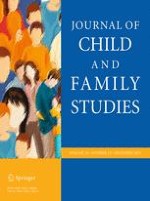16-04-2015 | Original Paper
The Effect of Teach One Reach One (TORO) on Youth Acceptance of Couple Violence
Gepubliceerd in: Journal of Child and Family Studies | Uitgave 12/2015
Log in om toegang te krijgenAbstract
This study evaluated the impact of the Teach One Reach One intervention, a community-based participatory research project designed to address the co-occurrence of adolescent risk behaviors on acceptance of teen dating violence. Data were derived from 331 rural African American youth between 10 and 14 years of age who participated in caregiver-youth dyads as either: (1) peer lay health advisor dyads, or Ambassadors, (2) caregiver-youth dyads recruited by Ambassadors, or Allies, or (3) comparison dyads. The following study focuses on participating youth only and our results indicated that: (1) Ambassadors and Allies reported less acceptance of couple violence than youth within the comparison group, and (2) less family cohesion, greater family conflict, and greater knowledge of healthy dating behaviors predicted greater acceptance of couple violence. Our findings highlight the efficaciousness of the TORO intervention, which directly engaged participants in prevention efforts through community-based participatory research methods and the use of lay heath advisors.
